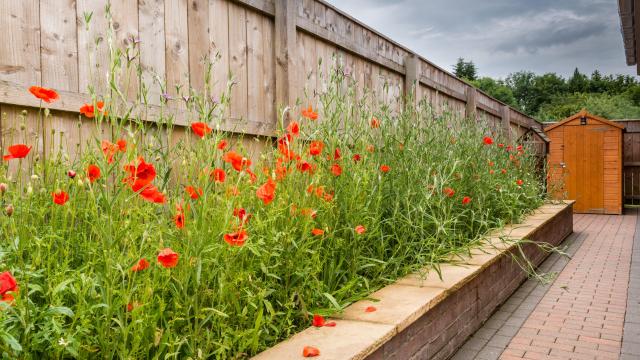Wildflowers bring a beautiful array of colour to your garden, and they come in more varieties than you might realise. And in addition to being beautiful, wildflowers attract pollinators like bees, butterflies, and hummingbirds, so they’re great for the rest of your garden as well as the local wildlife.
The best thing about growing wildflowers though is that if you get native varieties, they’re usually pretty simple and take very little maintenance once they’re sprouted. Native species are well adapted to your local climate and weather patterns, for the most part.
Why grow wildflowers from seed instead of starts?
Native wildflowers are sometimes hard to find as starts — although some nurseries will have them — but they can be relatively simple to grow from seed. Starts that are bought from nurseries are often made from cuttings, not raised from seed, which means that they’re basically clones. That isn’t usually a problem for a small garden, but contributing to the genetic diversity of local flora means that you’ll likely get a higher germination rate for your seeds, and potentially healthier plants. Growing a plant from seed also has a bonus sense of accomplishment when you get to watch their growth.
Choose seeds for your climate and conditions
The trick to picking out wildflowers that will work for your yard is considering your regional weather, as well as the conditions of your specific planting spot. To find wildflowers that are adapted for your region, you can look up your climate zone. You can also look up which plants are native to your region as well, giving you a good idea of what will be easiest in your climate.
To make sure you’re planting flowers that will flourish in your particular conditions, verify on the package what its light, soil, and moisture requirements are. Make sure not to plant a shade-loving, mulch-loving plant in full sun in sandy soil.
Prep your wildflower seeds for germination
While there are some types of native wildflower seeds that can be simply raked into the soil and lightly watered, others might need a little more care to start out strong.
Some seeds will need to be stratified, or stored in a cool place for a period of time before planting. (It basically mimics the winter cold that some plant seeds are adapted to growing in.) There are two ways to do this; one is to plant your seeds in fall and allow the seeds to germinate naturally, and the other is to refrigerate moistened seeds indoors before planting.
Some seeds will need scarification: a process to approximate the process of being worn away over a few years outdoors in the soil without waiting years for germination. The most common ways to scarify seeds are to soak them in warm water for a period of time, to nick the seed with a knife, or to rub the seed over rough sandpaper. Be sure to read the package or inquire with your supplier about what type of preparation your seeds might need.
Make sure to look out for interaction with other plants
Once you’ve gotten all your preparation done, the last thing to take into account is the surrounding plant life your seeds will be joining. If you’ve got fast-growing invasives like a creeping ivy, or taller weeds that will shade your wildflower seedlings out before they get a chance to fully sprout, you might need to do some mowing or weeding before you sew your seeds.
Conversely, if you plan to try and contain your wildflowers to a specific area, make sure that they’re not a type that will spread quickly and crowd out other plants. Keep in mind the old adage “one year to seed, seven years to weed” when you’re planning your wildflower garden. Native wildflowers will be adapted to seed themselves in your environment, so make sure you’re ready for blooms for years to come.

Leave a Reply
You must be logged in to post a comment.